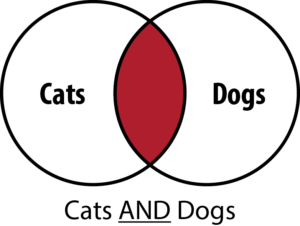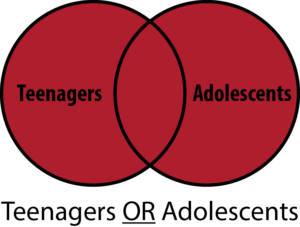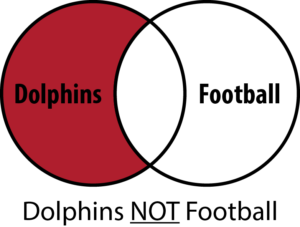A Library database that we recommend for English 110 students is Academic OneFile. We’ll use this database to talk about building an effective search.

Screen capture image of Academic OneFile database revealing keyword search boxes.
As the layout of the database implies, databases require several pieces of information, which is why one-word searching or searching by typing in a whole sentence does not work.
Once you have your keywords or the aspects of the topic that you want to research in mind, it helps to connect those search terms in a way that the database can understand.
 Venn diagram for “AND” image in a Boolean search. |
Using AND asks the database to return articles that contain both terms. |
 Venn diagram image for “OR” Boolean search. |
Using OR is a great way to present the computer with synonyms that you thought of when brainstorming your keywords. OR will return articles that contain either one of your search terms. So, if one article uses the word “teenagers” and another article uses the word “adolescents,” using OR will allow you to find both articles. |
 Venn diagram “NOT” image for Boolean searching. |
Using NOT will keep unwanted items out of your results. For example, if you want to search for how global warming is affecting dolphins in the Gulf of Mexico, you may want to keep “football” out of your results so that you don’t receive articles about the Miami Dolphins. |
ENGL110 Tutorial Progress
ENGL110
1. Research Basics
2. Developing a Research Topic
3. Types of Sources
4. Thinking About Keywords
5. Brainstorming Keywords
6. Research: Summary
7. All About Books
8. Starting your search: DELCAT Discovery
9. Call Numbers
10. Finding Articles
11. Databases
12. Selecting a Database
13. Searching: Connectors
14. Searching: Fields
15. Searching: Truncation & Phrases
16. Searching: Helpful Limits
17. Searching: Not-So-Helpful Limits
18. Retrieving Your Results
19. Getting Help
20. Research Help
21. Help Accessing Materials
22. Help Accessing Materials - Forms
23. Conclusion
24. Information for Instructors
